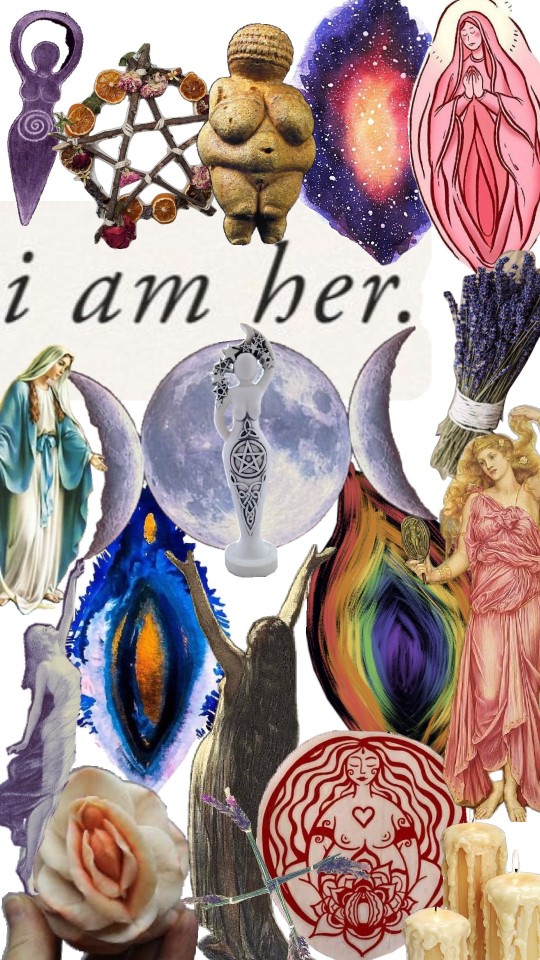Text
Wise / Dark Mother vibes🖤🩶🖤❤️🩶🖤❤️
Amadea🙏

Cancer.
While I don’t do any tattoo stuff - I don’t mind folks getting my art inked, I just ask that anyone who wants to get it done considers picking something up from my online shop or purchasing a tat flash to help let me keep making my art! Thank you all so much for your support! ❤️
255 notes
·
View notes
Text
dea-coded & Janyati-pilled
The world's oldest story? Astronomers say global myths about 'seven sisters' stars may reach back 100,000 years https://phys.org/news/2020-12-world-oldest-story-astronomers-global.html
Holy shit, this is cool!
So many cultures call the Pleiades some variation of the "seven sisters" despite only having six visible stars. There only appear to be six because two of the stars are so close together as to appear as one.
The myths also mention one sister leaving or hiding to explain why there's only six. And based off observations and measurements, those two that are so close together used to be visibly separate. One literally has moved to hide.
And based off the similarities between the more commonly known Greek myth and the Aboriginal Australian myth, plus some other stuff, this myth could possibly even date back to when humanity still all resided in Africa!
54K notes
·
View notes
Text
The Goddess Project actually made an episode on this. I highly recommend it. She makes an amazing point - many modern people do not know this, but cows DO grow horns! Female cattle have horns too. So, to an ancient person, particularly an ancient farmer, they would probably understand a horned goddess just fine
also from billingsfarm.org just to back this up
"Almost all cattle are born with the ability to grow horns, even cows (female cattle)! Most of the time, famers will remove the horns on their cows to prevent any accidents. Working steers and oxen on the other hand almost always keep their horns."
As soon as I saw the idea of “The Horned Woman” as opposed to the Wiccan/neo-pagan idea of the Horned Man, I was in love. Feels like a sort of “divine archetype” I can actually relate to—female with traits traditionally considered masculine. Granted, I’d only heard of this from some blogs on here, and when I look up, say, ram’s head imagery, there seems to only be masculine traits associated (which makes sense, given that rams are male).
So is there any historical basis for that archetype? I honestly like it so much I might utilize it even if it’s a niche recent invention/reinterpretation.
12 notes
·
View notes
Text
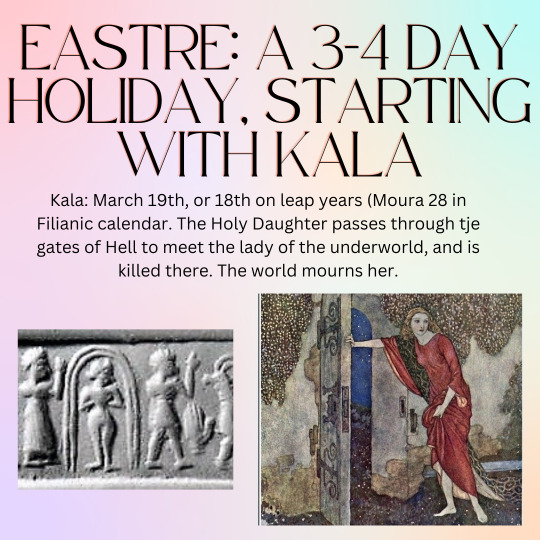

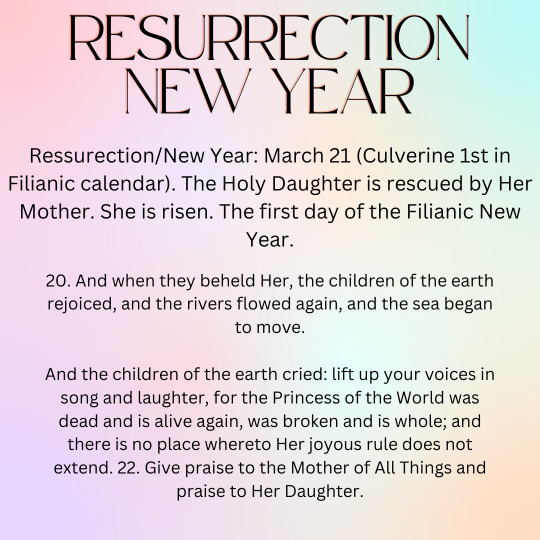
instagram
May everyone be blessed by the Holy Daughter on this wonderful new year💗 Amadea. Please visit my instagram if you want a filianic insta feed😁
#filianism#deanism#dea#goddess#god#spirituality#filianic#religion#love#deanic#godthedaughter#god the mother#Instagram
9 notes
·
View notes
Text
I love seeing these stories😊 Glad you found us🥰
Are any Filianist/Madrian/Deanists willing to share how they came to/found that religion?
The religion my sisters and I practice is far closer to that than the mostly Wicca (and Wicca based) traditions that those we share a community with follow, and I know there is a greater call for these more devotional paths in those spaces. I’m hoping to develop a better understanding of the needs of devotional Goddess religion seekers and devotees, and I know the Filianist community has a lot of valuable perspectives on that.
#goddess religion#goddess#filianism#deanism#madrian#great mother#goddess worship#dea#god#spirituality#godthedaughter#god the mother
18 notes
·
View notes
Text
For me, I was researching goddesses in high school. I was particularly interested in Green Tara, and felt connected to Her for many reasons but I also loved that we were both 16. I was googling her when I came across the Mother God homepage - I had never seen anything like it. I clicked off of the page then couldnt stop thinking about it, and kept pullinh it up again and again. Eventually, I stopped looking at the site, until like a year later or something I spontaneously ordered the Mother God edititon of the scriptures. It sat around for awhile until I felt out of nowhere like I should read it and I've been tied to Filianism since.
Are any Filianist/Madrian/Deanists willing to share how they came to/found that religion?
The religion my sisters and I practice is far closer to that than the mostly Wicca (and Wicca based) traditions that those we share a community with follow, and I know there is a greater call for these more devotional paths in those spaces. I’m hoping to develop a better understanding of the needs of devotional Goddess religion seekers and devotees, and I know the Filianist community has a lot of valuable perspectives on that.
#goddess religion#goddess#filianism#deanism#madrian#great mother#goddess worship#spirituality#spiritual journey#god#godthedaughter#god the mother
18 notes
·
View notes
Text
💕Amadea💕

Edward Reginald Frampton (1872-1923)
“La Madonna Di Promessa” c1890-1914
213 notes
·
View notes
Text
I love seeing prayers and stories of devotees who worship Gods that I don’t worship.
Actually, I’ve always been like this.
I love hearing the tales of religions that I don’t subscribe to. Even if I don’t agree with every Christian, I do enjoy hearing Christians talk about how wonderful Jesus is and what he means to them personally.
I enjoy hearing Muslims talk about their prayers, how they reserve time out of their day for their God.
I enjoy hearing Jews sing their psalms, I love hearing about how they prepare their food, how they consider God’s hands in their meals.
I love hearing about Hellenic rituals and Semetic celebrations. I love learning about the different holy days among different groups of pagans.
I love learning how different people have incorporated different Gods, acts, and customs into their faith. I love hearing about their myths and legends, the stories they tell their children before bed.
I love hearing about the different ways that humanity has connected to their personal idea of God.
I don’t worship Apollon or Shiva today, but I am so delighted to hear the prayers of those that do. It’s like I’m getting to feel the mist erupting off of a waterfall. Or hearing the echo of a song that I do not know the lyrics to, but I can still hum the melody. I can feel the notes permeate my mind, even if I don’t know what they mean.
I love that there are people who worship these Gods that I do not worship. I’m happy that there is so much diversity among humanity that we have enough love in us for all of them.
For the ones that even I don’t know the names of, or felt the warmth of. Someone has.
That’s a very very good thing.
1K notes
·
View notes
Text
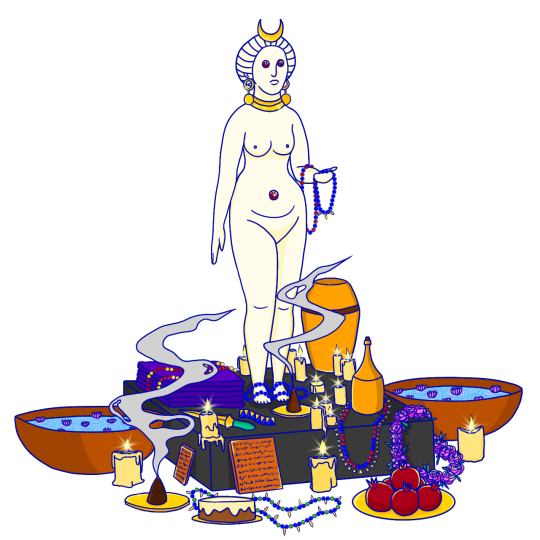
An altar to the goddess Inanna, inspired by the (much smaller) famous statue of Babylonian Ishtar. I included some items found in the royal tombs at Ur, as well.
162 notes
·
View notes
Text
9. never connect to your spirituality and religion
how to become disembodied pro tips
1. never exercise, don’t even go for a walk if you can help it
2. socialize online where no one can see your face and body or hear your voice
3. orgasm only when you’re alone watching a video of strangers having a scripted interaction
4. never make something. never even put a premade something together.
5. refuse to touch and be touched
6. get everything delivered
7. replace what you have lost with fantasies of a life
8. deny that you feel the loss
5K notes
·
View notes
Text
Amadea
I crave a small temple,
Near the foot of a mountain
Where birds and I sing praises in Her name,
Flowers and the streams that feed them
A way to venerate Her.
24 notes
·
View notes
Text
Verse of the Day
“Love the World, but love it for that it is an echo of Eternity.”
- Fragments of Lost Clews, Page 79 verse 4
4 notes
·
View notes
Text
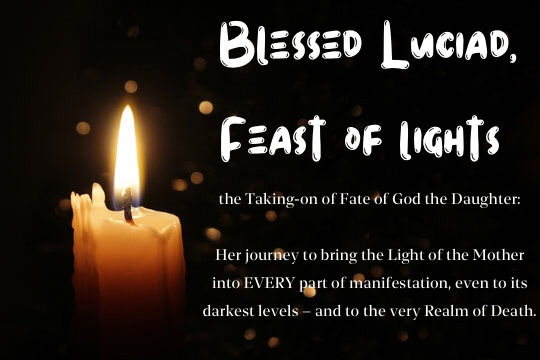

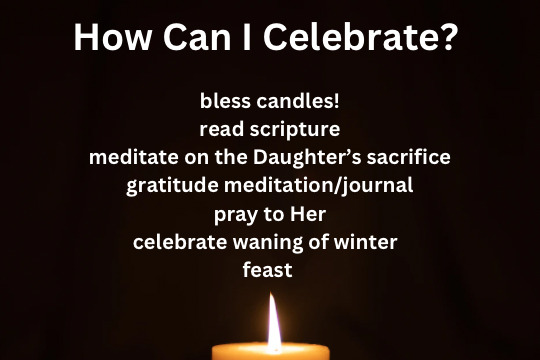

💗I hope everyone has a Blessed Luciad💗
In good timing with the season, I am experiencing a lot of change in my life, and look forward to the light of this new season of life. I am healing from recurring major depressive disorder so my posts have been infrequent but I am trying to get back into the swing of things here! Tell me about how your Luciad goes, if you wish :)
instagram
#filianism#deanism#dea#goddess#god#spirituality#filianic#religion#love#deanic#holiday#paganblr#god the mother#godthedaughter#goddessreligion#goddessworship#mothergoddess#heavenly mother#the divine feminine is real and it's everything#divine feminine#religious#spiritualjourney#Instagram
10 notes
·
View notes
Text

Source
Reverence
A reverence is a small bow made when greeting someone or on certain other occasions. It nearly always accompanies the word "Rayati", and is made wherever Rayati is given.
Note that in idiomatic Aristasian speech, Reverence is made and Rayati is given. So a person is described as "making reverence". If the action is described she may be said to "make deep reverence", "make slight reverence" etc. To "make one's reverence" tends to be used of children, as in "Make your reverence, dear" or "I made my reverence, Mummie". Sometimes this form is also used where a "cute" or "childlike" effect is intended. "The blonde made her reverence" has a distinctly more "cutesy" nuance than "The blonde made reverence".
Reverence may be made with the hands pressed together (as in a West-Tellurian attitude of prayer), either at the chest or at the forehead. The latter is more respectful or humble. Everyday reverences are often made with the hands at the sides (brunettes and especially military) or folded over the solar plexus (blondes) or abdomen.
The reason often given for the differing styles of blonde and brunette reverence is that blondes are "closed" in comparison to the "openness" of brunettes. Thus, in a traditional style of old Southern house that is built around a courtyard, blonde rooms always face inward, onto the courtyard and brunette rooms tend to face outward to the "world".
Th idea that blondes and brunettes manifest respectively the inward and the outward, the enclosed and the open, is reflected in the traditional styles of reverence.
Blondes may also curtsey by way of reverence, though this is less common except in certain areas. There is also a sort of combined bow and curtsey (a bow accompanied by a lowering of the knees) which is sometimes used by blondes to show especial respect. This form is also considered particularly courtly and elegant in some circles.
The use of the curtsey by blondes is sometimes explained by the fact that maid's upright posture is the sign of her Axial nature (videMaid) as opposed to animal creation, and blondes, being regarded in some ancient cultures as the more spiritual sex, should, in making reverence, lower themselves without compromising their Axial uprightness.
Whether bow or curtsey, the depth of the reverence is the primary indicator of the degree of reverence being accorded, as well as the position of the hand in the pressed-hands style. It may vary from a nod of the head to a 15-degree, 30-degree, 45-degree or even 90-degree bow. Very deep reverence is appropriate for making serious apologies (for slight apologies a smaller one is appropriate) and for greeting spiritual superiors and superiors very senior to oneself. Thanks are also often accompanied by reverence, again the depth of the reverence according to the profundity of the thanks. The most extreme reverence consists of kneeling and touching one's forehead to the ground. This is made by very great inferiors, and also when apologising very profoundly for some grievous offence.
In some contexts, such as certain military units, certain schools, and in some (but not all) very traditional areas, precise degrees of reverence are prescribed for most different circumstances. In general, however, degrees of reverence are a more or less "instinctive" matter: though in a foreign country or area, one should carefully note the practice of others.
A slight reverence - just a nod of the head sometimes may be used by superiors acknowledging inferiors but not fully reverencing them. It is also used in some very informal settings (as among some younger people in Quirinelle and Vintesse - especially the more northerly regions) where full reverence is being "skipped" or "slurred over". This can cause offence in more formal company, and in general one is advised to use the most formality compatible with a given situation, at least until one knows people well enough to know what is acceptable to them.
When superiors lightly acknowledge inferiors, or do not reverence at all, this is not a sign of arrogance or disrespect. Rayati is given to all, since the Solar Spirit is in all. The Reverence might be likewise made to all and in some cases is: but where a superior has any form of guardianship over the inferior who is saluting her (a teacher, a priestess, a direct personal superior etc.) the absence of the reverence is seen as a sign of "being a rock" for the inferior. The superior ultimately represents the Empress and Dea Herself to the inferior, thus she accepts reverence on behalf of the Golden Chain of which she is the higher link.
While some Tellurians, with their individualist and democratist assumptions, might find this surprising, the acceptance of reverence by her superiors is actually a comforting and warming thing to an Aristasian: a perpetual sign that she is not forced to fend for herself as an isolated individual, but is anchored firmly to the Golden Chain of Divine Authority.
3 notes
·
View notes
